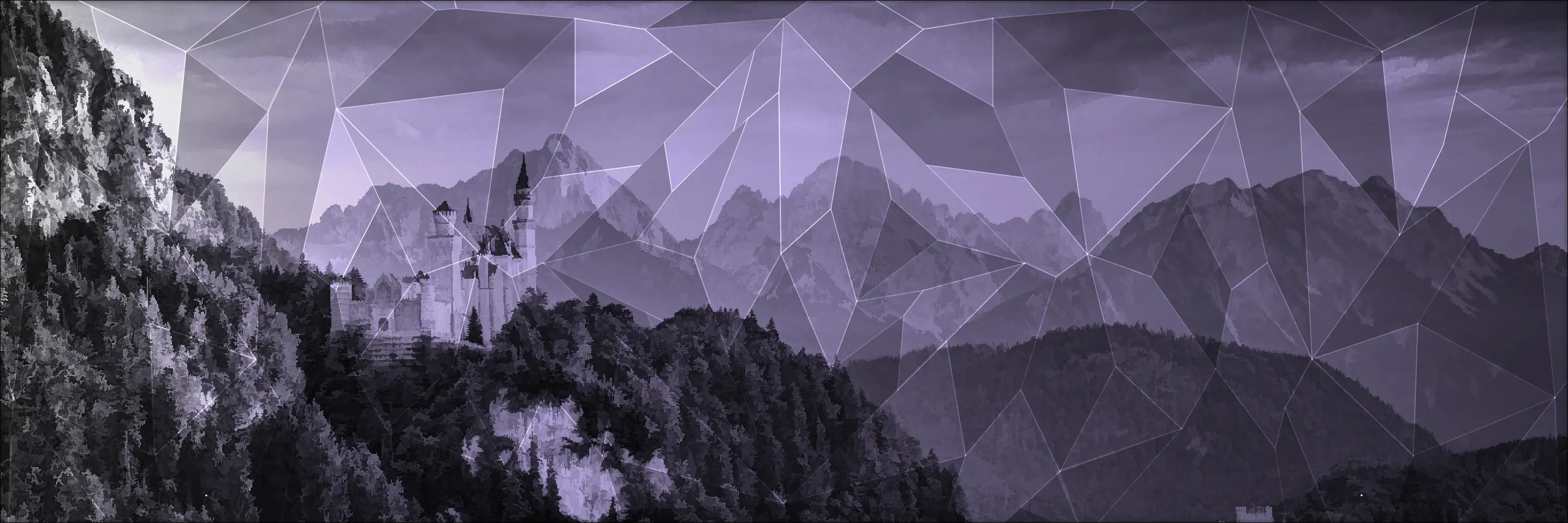
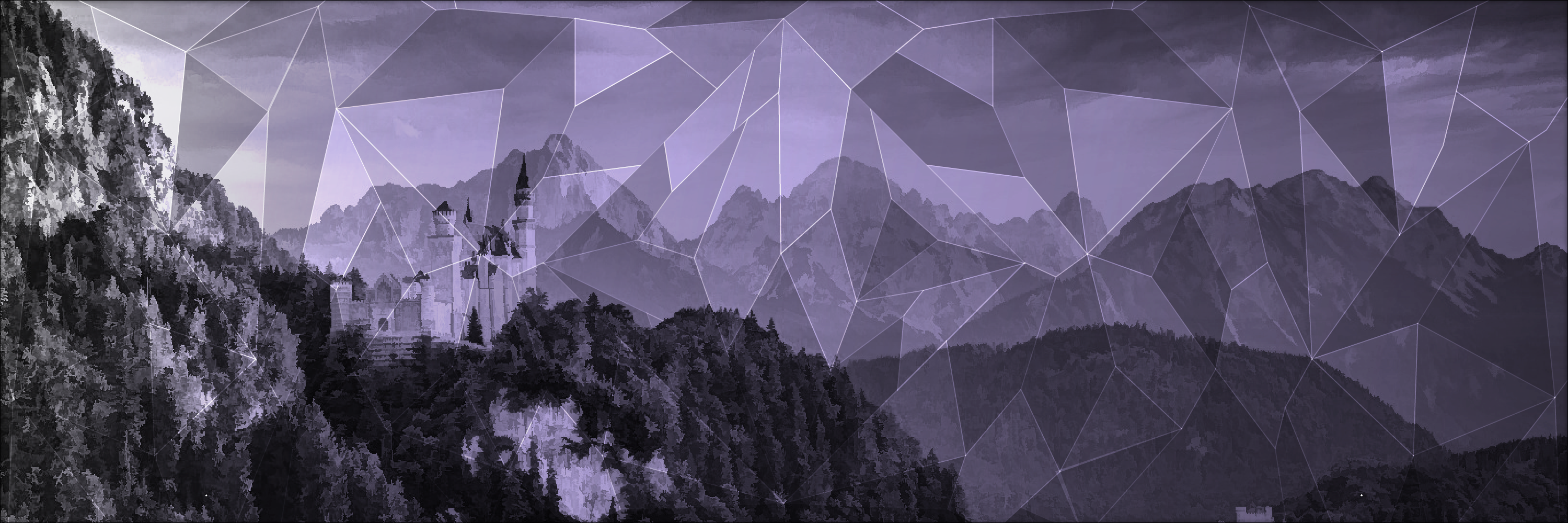
Overview
Westmark is a land of rolling green fields interspersed with woods in the northwest of Ealia. It encompasses all of the land west of the Deep Fields, north of the Earthscar, and south of the Witchwood. Though inhabitants of the Weathered Coast prefer to be separated from the greater region of Westmark, they are descended from the original Westrian settlers and are usually grouped in with the larger region.
Westmark is home to two nations, both formed from the ruins of a singular old kingdom: Velysord, and the Westrian Confederation.
Geography
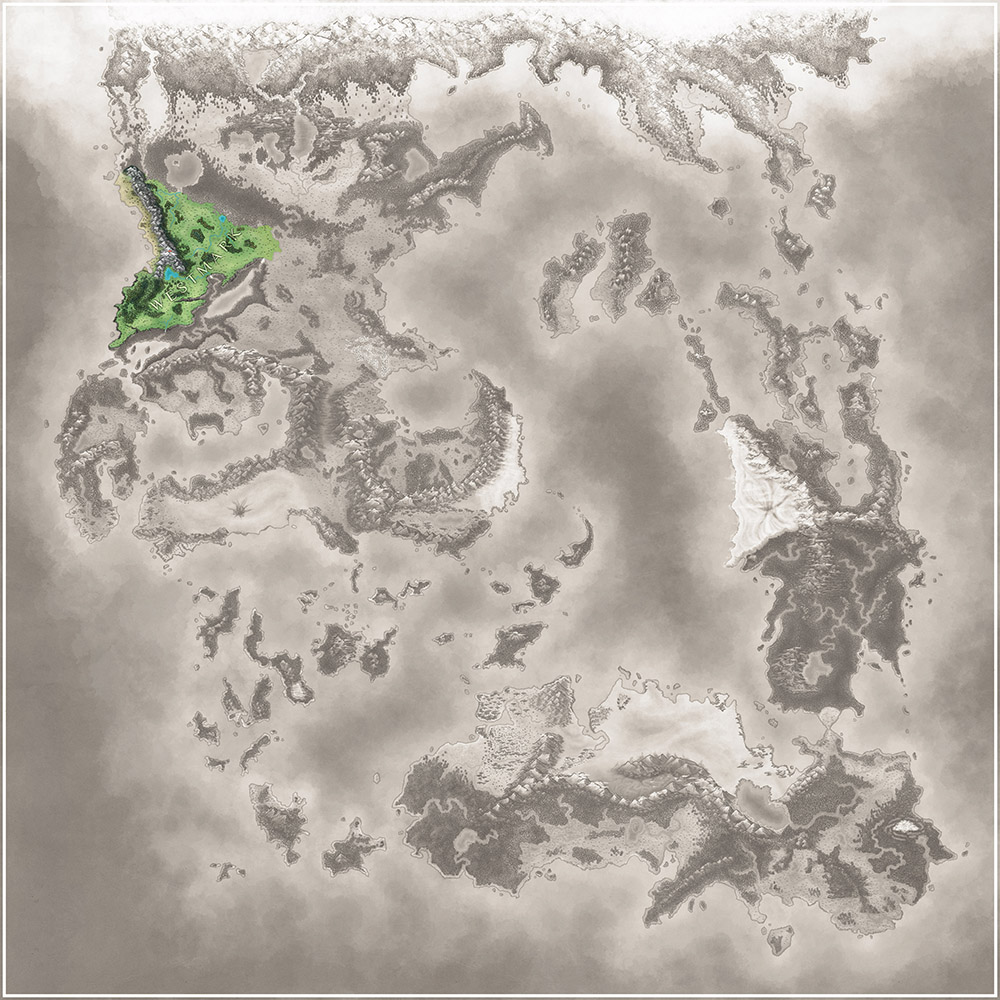
Westmark has all the beautiful grassy charm of the Deep Fields, but without any of the roving, murderous orc hordes. Terribly cold in winter, though. — Merrell Farhand
Westmark's borders vary slightly depending on who you ask, but primarily occupies the wedge of grasslands between the Westreach Mountains and the Witchwood. Many would include the coastline west of the mountains, and some would even include the vast majority of the Witchwood, but inhabitants of both would disagree with that. The region is usually broken up into four majour subreigions: The West Mark, the Moltenmoor, the Wealdmarch, and northern portions of the Overlook Plateau. Westmark's titular subregion, The West Mark, is always distinguished from its larger counterpart with the definite article. The West Mark is a span of mostly wide open short grass fields and bountiful localized forests. It is the largest subregion in Westmark is its reach is usually attributed to everything west of and including Lakeholm and north of Shadestead, though many would include the lowland along the Wolfrun River as far south as Wulford to be part of this region as well.
The majority of Westmark's population is located somewhere in The West Mark with it being home to the three largest settlements in the region: Wickshyre, Brightburg, and Lakeholm. In the south of Westmark, the elevation of the land is noticeably higher as you begin to approach Mount Emberwrest. These grasslands are called Moltenmoor due to its proximity to the active volcano, but also because its ash-laden soil has led to a vast biodiversity. The region is not well settled with Brazierhall being its most notable settlement. The Wealdmarch is land not too dissimilar from The West Mark. However, it is often less humid and its proximity to the Deep Fields in the east has made settling there a dangerous endeavour more often than not. In addition, the far eastern side of the Witchwood is not well maintained by wood-elves, causing it to be a significantly more wild and dangerous section of the forest.
Climate
Overall, Westmark experiences a relatively short summer that is mostly wet and pleasantly warm, while its winter is longer, cold, and damp. Some regions of Westmark, most notably the Weathered Coast and the far south of Westmark, are exceptions to this. For most of Westmark, cool and wet air is carried south. These winds originate in Northern Ealia and gather moisture as they pass over numerous lakes in the Northern Lowlands, and the Trapped Sea to the northwest of Westmark. These winds generally flow south-westerly towards the Westreach Mountains, where they will have deposited almost all of their moisture by then. Any remaining moisture in the air is deposited in the mountains which feed the rivers flowing into the region. These air currents sometimes flow more south than west, passing over Stillwater Lake to gather more moisture, but the air is often very dry by the time it has reached as far south as the Overlook Plateau. During the summer, this means plentiful rains for bountiful crops, but it also leads to cold winters with heavy snowfalls.
The land nestled between the Vast Ocean and the Westreach Mountains sees little moisture over much of the year, often experiencing as little as a dozen days of rainfall each year. Air traveling north along the western coast is typically warm but on the dry side, and the moisture passing over Westmark from the north will have all been trapped by the mountains before being able to fall on the coast. Due to this, their winters are generally warmer and more dry than the rest of Westmark as well. While snow does fall it is usually in small accumulations and short lived here. Farther south, nearer to the Earthscar, warm and humid air traveling north can sometimes meet rather violently with the cool and dry air traveling south, causing the south of Westmark to be prone to tornadoes. This is typically south of Wulford and part of the reason why it is scarcely populated.
Natural Resources
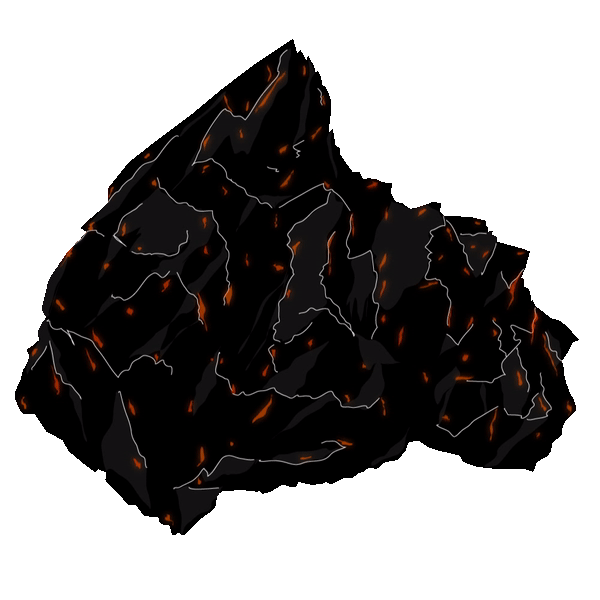
Vast portions of The West Mark are fertile lowlands that make for excellent farming in the wet and warm summer months of the region. Having healthy forests that are not part of the Witchwood also means timber can be easily harvested without upsetting wood-elves to the north for disturbing their forests. Fast and hearty breeds of horses are native to the region and their domestication and continued breeding played a vital role in the rise of The Old Kingdom in Westmark. The Westreach Mountains provide a wide variety of ores and minerals that provide for the making of steel, minting of their own copper and silver coins, as well as an ore unique to them, glodenstone.
Glodenstone
Only known to occur in the Westreach Mountains, perhaps as some result of giant meddling during the Thousand Year Wars, glodenstone is a strikingly black ore with non-uniform occurances of red flecks throughout. Glodenstone is opaque, so such red flecks can only be seen if they are on the surface of the ore. They are numerous enough that they are typically visible, and have become a way of quickly identifying the ore when compared to other deeply black minerals such as black onyx.
Biota
Flora
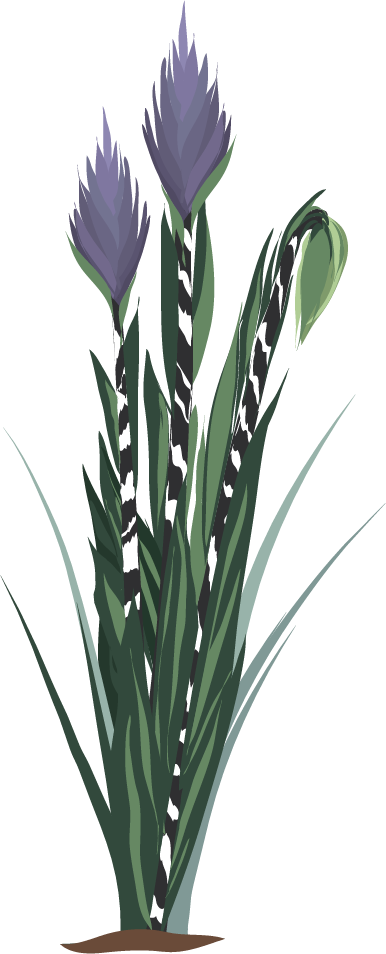
Westmark is covered mainly in both tall and short grassland. Much of the open land is fertile and tillable, making for ample farmland capable of growing a variety of crops such as corn, wheat, barley, rye, cabbage, and peas. The grassland is punctured by temperate deciduous forests. Many evergreen species of trees thrive in the higher altitudes of Westmark, such as in the south and west and especially among the Westreach mountains. Evergreen trees also become significantly more frequent in the Hinterwood at the northern extremes of Westmark. The region also natively supports many fruit bearing trees, including apple, pear, and chestnut. Some plants, namely Skunkwort and Drakus Flower, are found natively only in Westmark.
Skunkwort
True to its name, this flower gives off a pungent scent when it is flowering. Coincidentally, black and white stripes also wrap the stems of the plant in a fashion reminiscent of a skunk. Though their stems are distinctive, they are hidden well by the plant's wide and tall, green, fern-like leaves. The plant's fluffy purple flower which stands above the leaves is the easiest way to spot the plant among other green flora. Skunkwort grows to between one and two feet tall and typically in isolated clusters. It can be found mostly in swampy or very wet regions. Skunkwort has been harvested to near extinction in the wild. When the Children of the Flame came into power in the region they avidly sought this plant for spiritual reasons, believing that giants would use it in years gone. The plant was burnt as incense, which counter intuitively produces a sweet aroma and colourless smoke.

Drakus Flower
Drakus Flower grows as a vine along rivers and creeks. Its roots are strong enough to grow through fairly dense earth and stone, and it prefers to grow in places where other plants would not be able to take root. Although its roots are hardy, the plant as a whole is delicate and prone to being overtaken by other flora in the area. As a result, Drakus Flower is difficult to find and normally grows in out of the way places like rocky river embankments or along the ceiling of dark alcoves. While alive, its inflorescence produces a very subtle yellow glow at the center of its wide, thin, white petals. The flower is believed to have magical properties by those familiar with it. If brewed into a tea it can sometimes cause one to have hallucinations of things yet to pass.
Fauna
The vast grasslands of Westmark make for the perfect home of many prairie animals such as bison, cattle, hares, prairie dogs, antelope, coyotes, and horses. Its forests are also home to many kinds of squirrels, deer, and a vibrant cast of owls and hawks that stalk the prairies for prey at night. In the higher altitudes of Westmark, cougars, bears, and snakes are also very common. Although sheep and goats are not native to the region, they have long since been introduced by settlers and fare well there. The region is home to many breeds of horses but is famous in particular for its Westrian White breed.
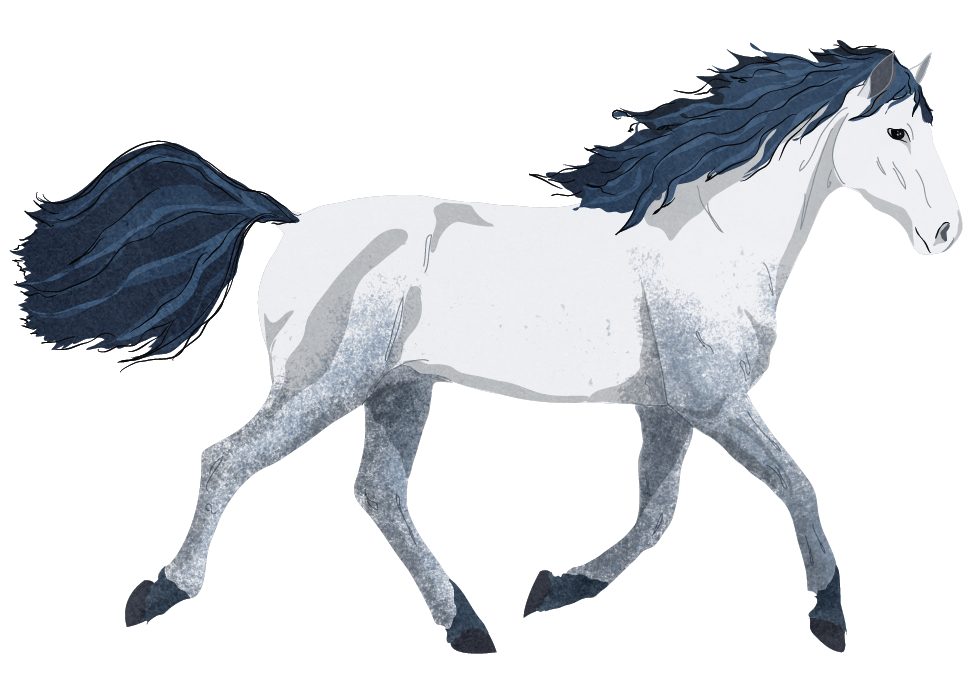
Westrian White
Found only in Westmark, this breed of horse is a natural mix of strength, swiftness, and subjectively, beauty. They are easy to spot with off-white coats and silver-blue manes, and may or may not have silver-blue dappling on their legs and lower torso. They stand out against the green fields of Westmark, though can be camouflaged quite well in the winter months. An adult Westrian White will stand around 64 inches at the withers and weigh a little over 1,000 pounds. The first settlers of the region believed that Westrian Whites were a gift directly from Phiarae to aid in their conflict against hobgoblins. They have friendly temperaments and enjoy being trained. They are surprisingly swift for their relatively large size, being able to outpace many smaller breeds of horses. With a strong back, they also make for excellent work horses or for carrying a fully armoured knight with barding into battle. They are widely sought after for their versatility.
